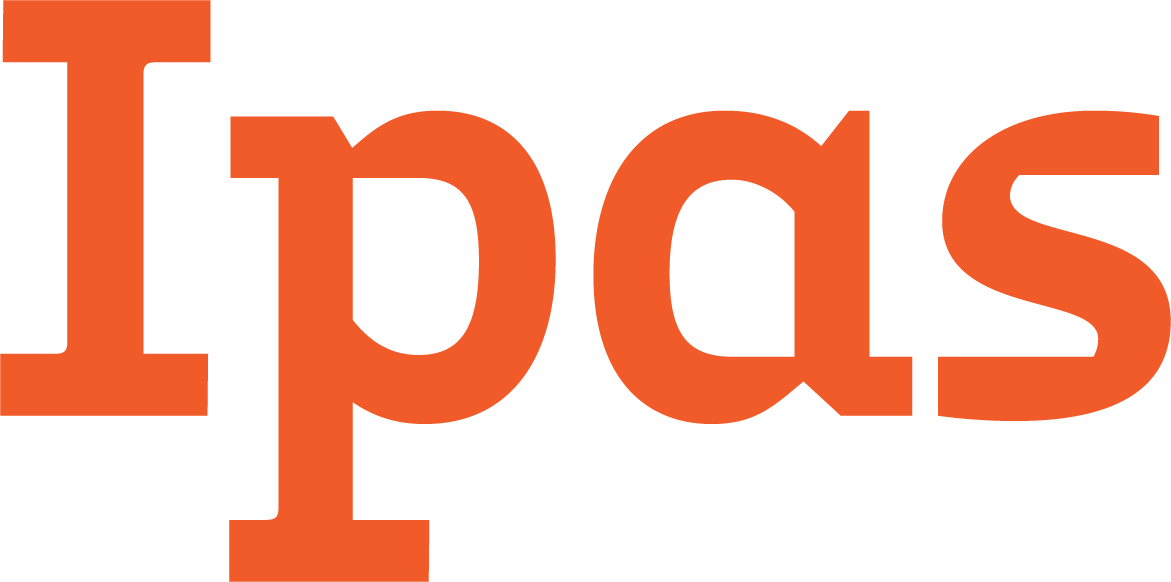Resources for sustaining the abortion ecosystem
We offer a wide array of resources for professionals and advocates in every sector of society to help expand abortion access and cultivate a sustainable abortion ecosystem. Learn more about our sustainable abortion ecosystem approach.

Toward a Sustainable Abortion Ecosystem: A framework for program design, action and evaluation
A continuing challenge in ensuring universal access to comprehensive sexual and reproductive health care is the inability of individuals to confidently and safely terminate an unwanted pregnancy. This framework for sustainable abortion care is Ipas’s response to that urgent need. Using a human-centered approach, it identifies steps for program design, action and evaluation—and recognizes that sustainable abortion care is dynamic and requires new thinking, new ways of collaborating and new approaches.
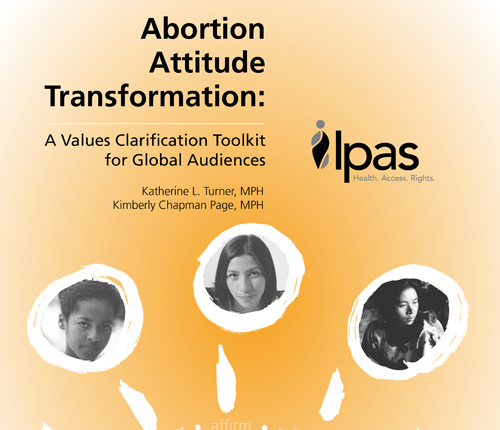
Abortion attitude transformation: A values clarification toolkit for global audiences
This toolkit is a resource for trainers, program managers and technical advisors who organize or facilitate training events and advocacy workshops in the field of sexual and reproductive health. It provides experienced trainers with the background information, materials, instructions, and tips necessary to effectively facilitate abortion values clarification and attitude transformation interventions.
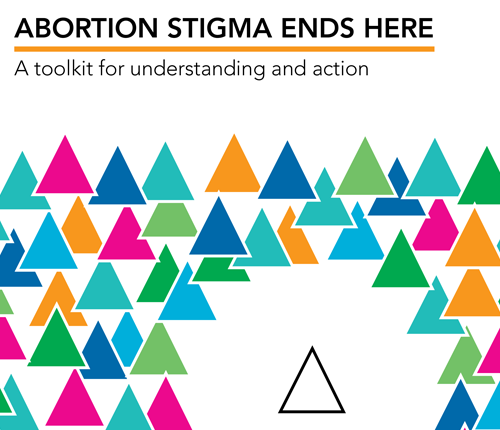
Abortion stigma ends here: A toolkit for understanding and action
Abortion stigma plays a critical role in the social, medical and legal marginalization of abortion care around the world—and it leads to negative health outcomes for women, girls, trans people and our communities. It drives the high number of preventable deaths and injuries around the world due to unsafe abortion.
Ipas offers this toolkit to address and help mitigate abortion stigma. It is designed to help community members, community health workers, activists and staff of community-based organizations and others address abortion stigma in various settings and contexts. The toolkit activities are clustered into thematic modules, but facilitators can also develop their own workshop agenda by picking activities that suit the goals of the gathering, the participants’ needs, the facilitators’ skill level and the time available. We have also created a CORE agenda—comprising exercises from each module—for those who want a pre-set agenda covering a range of activities.
Individual knowledge and agency

The 2016 Jhpiego Gender Analysis Toolkit
The purpose of the Gender Analysis Toolkit is to provide research questions to guide data collection when performing a project-level gender analysis. The Toolkit provides illustrative questions related to the five domains described in USAID’s Automated Directive System 205, which are: 1) Laws, regulations, and institutional practices; 2) Cultural norms and beliefs; 3) Gender roles, responsibilities, and time used; 4) Access to and control over assets and resources; and 5) Patterns of power and decision-making. The tool presents illustrative general and health area-specific questions organized in matrices related to different levels of the health system.
Community social norms and support

Abortion attitude transformation: A values clarification toolkit for global audiences
This toolkit is a resource for trainers, program managers and technical advisors who organize or facilitate training events and advocacy workshops in the field of sexual and reproductive health. It provides experienced trainers with the background information, materials, instructions, and tips necessary to effectively facilitate abortion values clarification and attitude transformation interventions.

Abortion stigma ends here: A toolkit for understanding and action
Abortion stigma plays a critical role in the social, medical and legal marginalization of abortion care around the world—and it leads to negative health outcomes for women, girls, trans people and our communities. It drives the high number of preventable deaths and injuries around the world due to unsafe abortion.
Ipas offers this toolkit to address and help mitigate abortion stigma. It is designed to help community members, community health workers, activists and staff of community-based organizations and others address abortion stigma in various settings and contexts. The toolkit activities are clustered into thematic modules, but facilitators can also develop their own workshop agenda by picking activities that suit the goals of the gathering, the participants’ needs, the facilitators’ skill level and the time available. We have also created a CORE agenda—comprising exercises from each module—for those who want a pre-set agenda covering a range of activities.
Political support & leadership

Breaking Ground 2018: Treaty Monitoring Bodies on Reproductive Right
This booklet summarizes the jurisprudence from United Nations treaty monitoring bodies on reproductive rights, particularly the standards on reproductive health information and contraception, maternal health care, and abortion. It is intended to provide treaty body experts and human rights advocates with succinct and accessible information on the standards being adopted across treaty monitoring bodies pertaining to these vital rights.
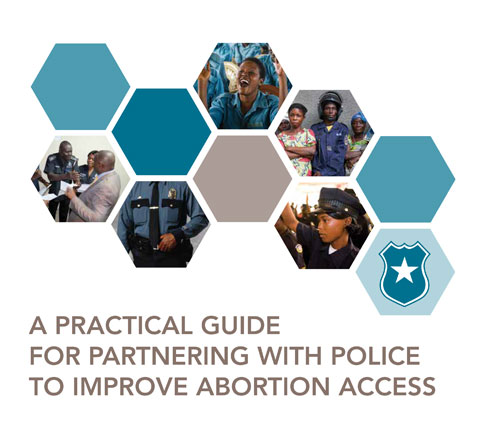
A practical guide for partnering with police to improve abortion access
This guide is a resource for advocates, trainers, project managers and technical advisors who design programs and workshops to engage police on abortion issues. Drawing on the work of Ipas and other organizations, it offers practical strategies for partnering with police to address stigmatized issues and promote public health, with a specific focus on abortion. It can be used both in settings where abortion is legal and accessible and in settings where it is highly restricted.
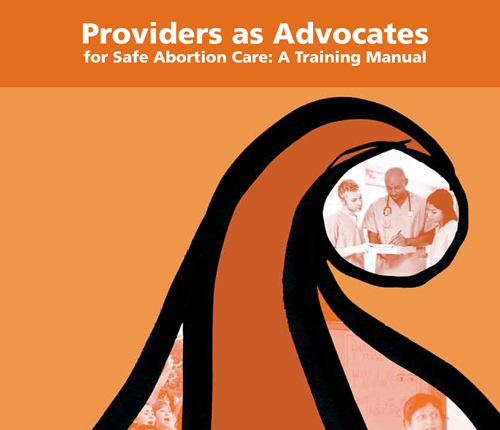
Providers as advocates for safe abortion care: A training manual
Organized in four parts, this training manual aims to foster an advocacy perspective in health-care providers who are involved in delivering abortion and/or postabortion care. The manual will help providers recognize their personal power as advocates and identify different circumstances and means to advocate for comprehensive abortion care to the full limits of the law.
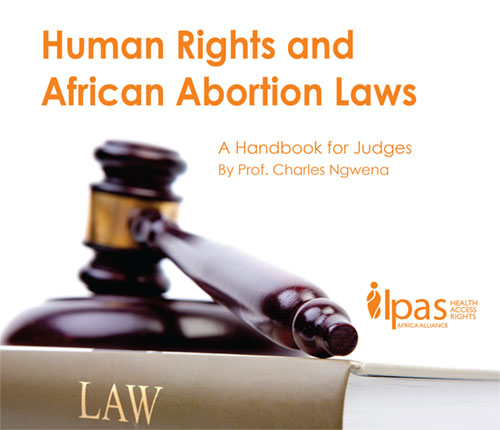
Human Rights and African Abortion Laws: A Handbook for Judges.
This handbook, written by Prof. Charles Ngwena and published by the Ipas Africa Alliance, is designed to raise judges’ awareness about the human rights obligations associated with abortion. Judges can use it as a guide to interpret and apply domestic abortion laws, taking into account global and regional human rights standards.
Report of the Office of the United Nations High Commissioner for Human Rights: Technical guidance on the application of a human rights-based approach to the implementation of policies and programmes to reduce preventable maternal morbidity and mortality
This report contains concise technical guidance, in accordance with the request made by the Human Rights Council in its resolution 18/2. The aim of the report is to assist policymakers in improving women’s health and rights by providing guidance on implementing policies and programmes to reduce maternal mortality and morbidity in accordance with human rights standards. It highlights the human rights implications for multiple actors in the policymaking, implementation and review cycle, as well as the need for robust enforcement mechanisms and international assistance and cooperation.
United Nations Human Rights Bodies
The Office of the High Commissioner for Human Rights (OHCHR) works to offer the best expertise and support to the different human rights monitoring mechanisms in the United Nations system : UN Charter-based bodies, including the Human Rights Council, and bodies created under the international human rights treaties and made up of independent experts mandated to monitor State parties’ compliance with their treaty obligations. Most of these bodies receive secretariat support from the Human Rights Council and Treaties Division of the Office of the High Commissioner for Human Rights (OHCHR).

Safe abortion: technical and policy guidance for health systems
Since first publication of this guidance in 2003, a considerable amount of new data have been produced and published, relating to epidemiological, clinical, service delivery, legal and human rights aspects of providing safe abortion care. This new edition provides policy-makers, programme managers and health-service providers with the latest evidence-based guidance on clinical care. It includes information on how to establish and strengthen services, and outlines a human-rights-based approach to laws and policies on safe, comprehensive abortion care.
How to talk about abortion: a guide to rights-based messaging
This guide provides useful tips and advice on what to consider when developing materials relating to abortion. The content includes examples of positive, rights-based messages, and how to avoid using stigmatizing language and images. This guide can be used by educators, advocates, programmers, health professionals and policy makers, among others, to help inform the development of a wide range of communication materials.
Policy & legislation
Young Women and Abortion: Avoiding Legal and Policy Barriers
This resource is designed to help advocates and policymakers promote laws and policies that support access to safe abortion for young women. Parental involvement requirements in law or policy are common barriers that push young women toward illegal and often unsafe abortion.
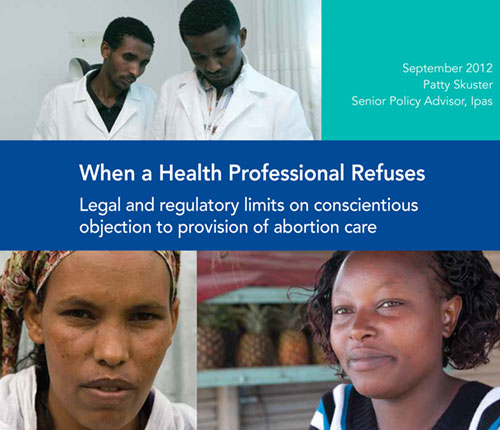
When a health professional refuses: Legal and regulatory limits on conscientious objection to provision of abortion care
Health professionals’ refusal to provide service that they oppose on moral or religious grounds is a significant barrier to women’s access to safe abortion and other reproductive health services. This resource contains recommendations for enacting laws and regulations that safeguard women’s access to services while still protecting providers’ rights of conscience. It also provides information on human rights standards that address provider refusal and includes a list of further resources.

Global Abortion Policies Database
A tool to expand knowledge, encourage transparency, and promote accountability.
Financing
Family Planning: High Impact Practices
Domestic public financing is one of several “high impact practices in family planning” (HIPs) identified by a technical advisory group of international experts.2 The purpose of these HIPs is to present the available evidence to support countries in achieving high quality, voluntary, equitable, and sustainable family planning. For more information about other HIPs, see http://www.fphighimpactpractices.org/overview
If you want to give your input or share other resources with us on the Financing component, please contact our Technical Assistance team at [email protected]
Commodities
Medical Abortion (MA) Supply Guidance Tool and MVA Supply Guidance
Online tools that forecast a facility’s needs based on service data and standard treatment regimens.
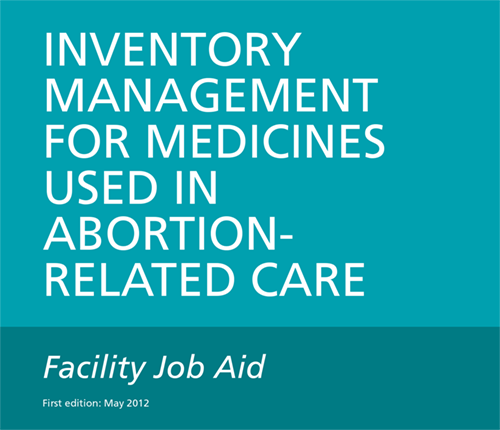
Inventory management for medicines used in abortion-related care: Facility job aid
This 12-page job aid supports efficient inventory management of misoprostol (and mifepristone, depending on the setting) and other maternal-health medicines. It defines sound inventory management practices that can help reduce stock-outs and oversupply situations, and is for use by staff in public health facilities, nongovernmental organizations (civil society organizations) and private for-profit clinics and hospitals.
Medical Abortion Commodities Database
Online database of registered MA drugs searchable by country
DKT WomenCare website
DKT’s website with their distributor contacts globally. Can be used to identify local sources for MVA and MA.
Health workforce & service delivery
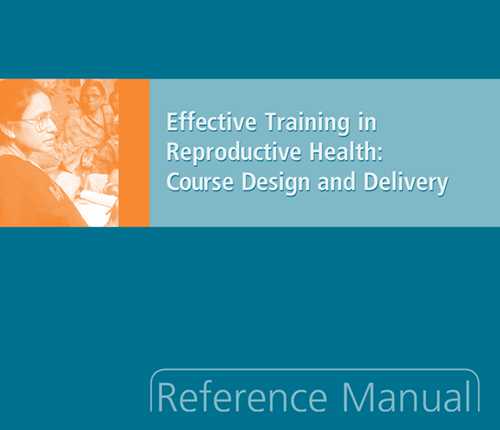
Effective training in reproductive health: Course design and delivery. Reference manual.
This manual is designed to be a resource for individuals who provide training in reproductive health, whether they work with health-care providers, managers, advocates or community members. It is designed to help these individuals strengthen their training and facilitation skills, enabling them to plan and implement more effective training courses and events.

Clinical Updates in Reproductive Health
Clinical Updates in Reproductive Health (CURHs) are designed to provide Ipas staff, trainers, partners and other health-care providers with access to up-to-date, evidence-based recommendations. In general, the recommendations are the same as those in the World Health Organization’s 2012 Safe Abortion: Technical and Policy Guidance for Health Systems, Second edition. In rare cases, the recommendations have been modified due to the settings where we work. In addition, if there is more current evidence to inform the recommendations, they will be updated here. Please note: Clinical Updates in Reproductive Health provides Ipas’s most up-to-date clinical guidance. Recommendations in this publication supersede any clinical guidance in Ipas curricula that differs from the guidance provided here.
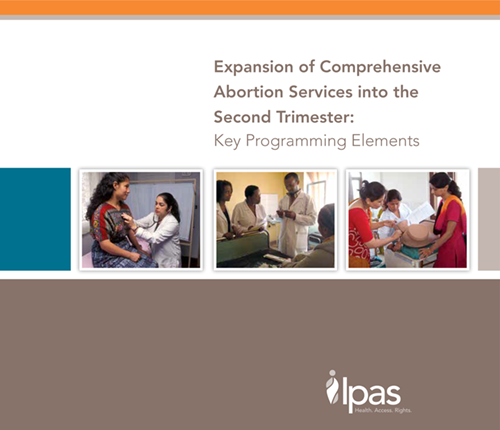
Second-Trimester Abortion: A Toolkit for Service Delivery
This guidance is designed for any health facility planning to expand its abortion services to include abortions in the second trimester of pregnancy. It provides the tools and resources necessary to successfully introduce and continue second-trimester abortion services and/or second-trimester postabortion care. The toolkit includes a description of key programming elements and a set of related tools and job aids.
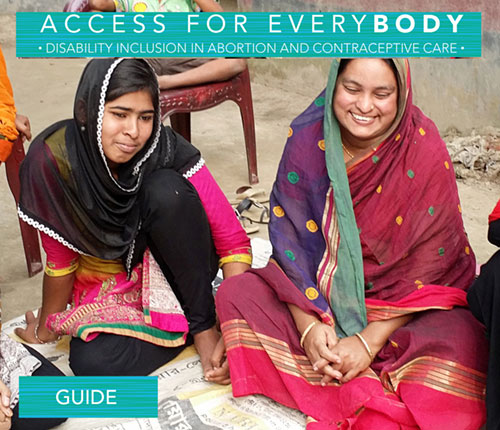
Access for Everybody: Disability inclusion in abortion and contraceptive care
This guide is a resource for program implementers and managers, technical advisors and trainers who design interventions to improve access to abortion and contraceptive care. It offers strategies for improving disability inclusion in policy, service delivery and community engagement interventions and can be adapted to meet the unique needs of each context. Recommendations are based on the human rights model of disability, which includes a “twin-track” approach that promotes the empowerment of people with disabilities by creating disability-specific initiatives and integrating disability inclusion in general programming. Active and meaningful participation of people with disabilities throughout all stages of planning, implementing and evaluating abortion and contraceptive care interventions is a core principle underlying each recommendation included in this guide.

Health worker roles in providing safe abortion care and post-abortion contraception
While WHO’s 2012 publication Safe abortion: technical and policy guidance for health systems highlighted that abortion care can be safely provided by properly trained health-care providers, including non-physician providers who are trained in basic clinical procedures related to reproductive health, it did not provide specific recommendations with respect to different types of health workers or the tasks for which task shifting and task sharing are appropriate. There are no other global guidelines that provide such guidance, though some recommendations related to task shifting in contraceptive provision have been included in the OptimizeMNH recommendations, published in 2012. This guideline therefore aims to fill this gap with evidence-based recommendations on the safety, effectiveness, feasibility and acceptability of involving a range of health workers in the delivery of recommended and effective interventions for providing safe abortion and post-abortion care, including post-abortion contraception.
The guideline will be useful for policy-makers, implementers of national and subnational programmes, nongovernmental organizations and professional societies involved in the planning and management of such care.

Medical management of abortion
A number of new studies have been published in more recent years providing evidence related to the timing, dosage, dosing intervals and routes of administration of medications to manage abortion, and also the timing of contraception initiation following a medical abortion. This guide provides WHO’s most updated recommendations.
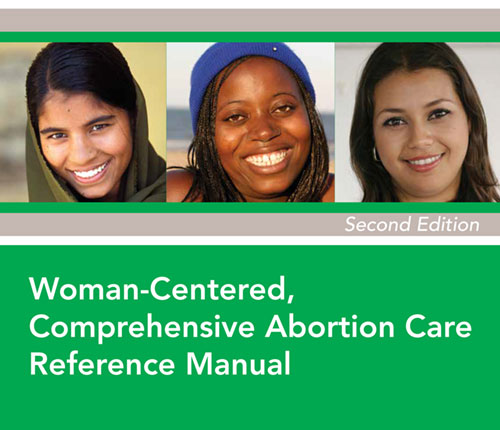
Woman-Centered, Comprehensive Abortion Care Reference Manual, Second Edition
This manual provides guidance to health-care personnel on improving the quality of care available to women seeking uterine evacuation services. It has been updated to be consistent with the World Health Organization’s Safe Abortion: Technical and policy guidance for health systems (2012) and other important evidence-based resource documents and articles. It explains the manual vacuum aspiration (MVA) uterine evacuation procedure in detail and also explains uterine evacuation methods that use the pills misoprostol and mifepristone (often called medical abortion). It is designed to be used as a participant’s manual during trainer-facilitated courses and as a as a learner’s resource to help refresh and strengthen skills. Special features include modules that address broader service delivery and access issues such as women’s sexual and reproductive rights, including the rights of young women; client-provider communication; provider and community partnerships; quality of care; and monitoring to improve services.
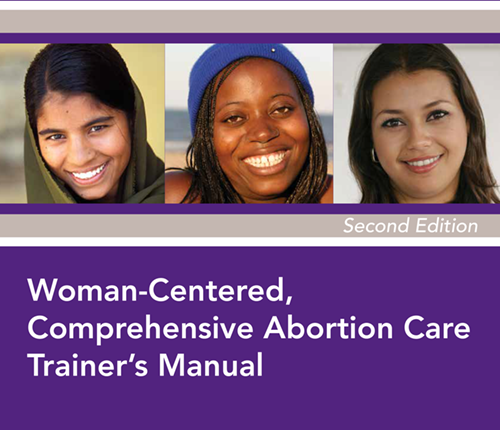
Woman-Centered, Comprehensive Abortion Care Trainer’s Manual, Second Edition
This manual is a resource for trainers who lead training courses for health-care workers delivering all elements of woman-centered, comprehensive abortion care, including postabortion care. It contains all of the instructions and materials needed to help participants develop the knowledge and skills necessary to provide high-quality care.
Woman-centered postabortion care: Reference manual, Second Edition
This manual is designed to prepare health-care workers to provide women with high-quality postabortion care services. It is useful for a broad audience—including clinicians, trainers, program managers and outreach workers. It provides in-depth clinical information on safe, effective options for first-trimester uterine evacuation and addresses broader service delivery and access issues, including the rights of young women, client-provider communication, and monitoring to improve services. It may be used for countries where there are no legal indications for induced abortion or where there are significant restrictions on induced abortion.
Abortion care for young women: A training toolkit
This toolkit is designed to provide information and guidance on delivering and ensuring access to appropriate induced abortion care for young women (ages 10-24). It provides experienced trainers with the background information, materials, instructions and tips necessary to effectively facilitate training sessions. Since existing research demonstrates few differences in the clinical needs of young women compared to adults, the toolkit contains more on advocacy, partnerships and service delivery than clinical issues. It is a global resource for health care providers, trainers, administrators and technical advisors of abortion care programs, but some materials also can be used to engage young people, policymakers, community groups, donors, advocates and other stakeholders.
Health information

Implementation of legal abortion in Nepal: a model for rapid scale-up of high-quality care
This paper examines factors that contributed to rapid, successful implementation of legal abortion in this mountainous republic, including deliberate attention to the key areas of policy, health system capacity, equipment and supplies, and information dissemination.

Health Management Information Systems (HMIS). Measure Evaluation
Health Management Information Systems (HMIS) are one of the six building blocks essential for health system strengthening. HMIS is a data collection system specifically designed to support planning, management, and decision making in health facilities and organizations. MEASURE Evaluation worked in Ethiopia to implement a HMIS in the Southern Nations, Nationalities, and Peoples’ Region (SNNPR) and Oromia. This link provides training materials that were used to support implementation of the HMIS including data quality assurance and information use procedures, the electronic HMIS system for managing data processing, reporting, analysis and use; and the and the community health information system (CHIS), which organizes information on individuals and families—information related to vaccines, family planning, maternal and child health, HIV treatment and support, and other services—and makes it available all in one place, such as a family folder.

Integrating Family Planning Data in Uganda’s Health Management Information System
Uganda’s health management information system (HMIS) was established in 1985 to collect and analyze national data on morbidity from communicable and noncommunicable diseases, reproductive health, family planning (FP), and immunization. The routine health data reporting system has evolved to the current platform, DHIS 2, use of which began in 2011 in a few districts and was rolled out to all districts in Uganda in 2012. Few studies have explored the mechanisms for integrating FP data from the public and private health sectors in Uganda’s national HMIS. This study aimed to investigate the barriers, facilitators, and best practices of integrating these FP data in the district and national HMIS in Uganda.
If you want to give your input or share other resources with us on the Health Information component, please contact our Technical Assistance team at [email protected]

